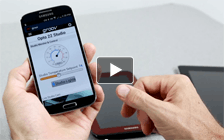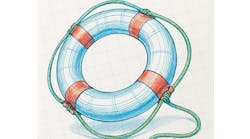At the Emerson Exchange last month, chief strategic officer Peter Zornio unveiled his take on the phenomenon, which he called "Pervasive Sensing." This is a really gutsy thing for one of the largest sensor manufacturer in automation to do. Rosemount's gross margins (and every single other sensor manufacturer in process and discrete automation for that matter) are very high in comparison to the gross margins of Emerson's systems business...this is well known and true for all the other automation companies. To dedicate Rosemount to make less expensive sensors (which is what Zornio needs
Years ago, I visited the PaccarTechnicalCenter in Mt. VernonWA. This is where Peterbilt and Kenworth trucks are designed and tested. I had an ISA hat on, and one of the demonstration engineers called me over and asked me, "Hey Mr. ISA guy, how much would I have to pay for this level application." He proceded to give me the specifications...24" cylindrical horizontal vessel; ambient pressure and temperature; fast filling, slow emptying; Class I Div I (hydrocarbons) area...and so forth. I told him it would cost about $2000 to put a sensor in the tank and measure the level of the fluid. He said, "Nyah! Here's the sensor we use. We pay $38 for it."in order to make "Pervasive Sensing" practical) means walking the tightrope between lower prices and lower margins. I have no doubt that they've already rehearsed that particular trick.
"Sure," I said, "but you have economies of scale, like GM and Ford!"
"Oh, no! We only build about 300 trucks a year-- no economies of scale here!"
One of the earliest lick and stick sensors.
In order to be able to afford 100 temperature sensors mounted up the side of a distillation column, they'll have to be significantly less costly...and as Zornio pointed out, they'll have to work, somehow, from outside the vessel. The two highest costs are wiring and punching a hole in the vessel where you want the sensor to go. Take those away, and you have projects that can be done on the maintenance budget.
Along with the change in design philosophy at places like Emerson, there have been other changes as well.
Are you familiar with Kickstarter? If not, you ought to be. Kickstarter is a "crowd sourced funding site" for, well, just about anything. One of my friends just funded her second album on it. Books have been funded by a whole lot of authors. See how Kickstarter works...here!
But over 60 projects for sensors have debuted on Kickstarter, and many of them have been funded. Here's one of them: Wattvision. Wattvision is similar to a number of sensor projects on Kickstarter. There are many. Just about half the number of sensor projects that have debuted have been funded. Some of the others weren't, even though they had what I thought was pretty cool stuff. These sensors are harnessing the intelligence in smartphones to provide sensors and services never possible before, at any price.
So far, many of these are not "industrially hardened." But who's to say you couldn't do one that is intrinsically safe, and that has all the capabilities of a standard sensor in a big blue bomb housing.
These sensors need the other end of systems to make them useful, too. Opto-22's new "Groov" shares design similarities with these sensors, as you can see instantly. The systems are simple, easy to design and operate, and are designed for ordinary people to use, not just sensor engineers with 20 years experience. Here's a screenshot from the video about how to set up Groov. See the video: http://groov.com/video-5-minutes-2-mobile/
Are lick and stick sensors coming overnight? No. Not really. Are they going to change the way we measure our processes? Absolutely, yes indeedy!
Are you ready for this?
If you aren't, you might want to start thinking about all the measurements you would like to have around your plant but haven't been able to get before, because the sensors themselves and the associated wiring and installation were far too costly for the perceived benefit. Take a look at what sensors are becoming available, because if your project isn't economically feasible yet, stand around for a while...it will be.






